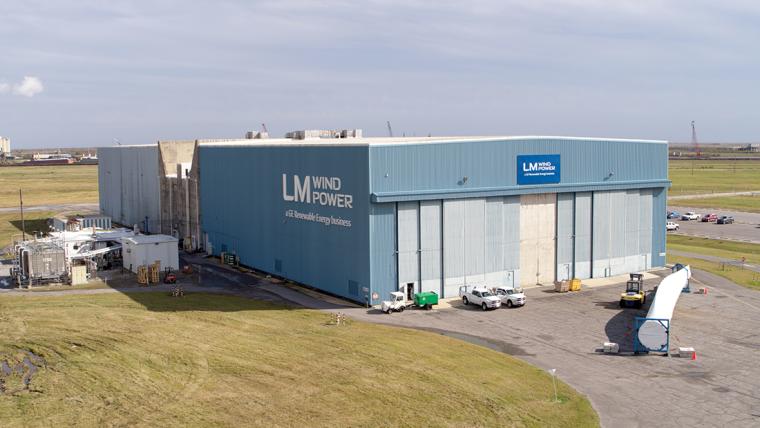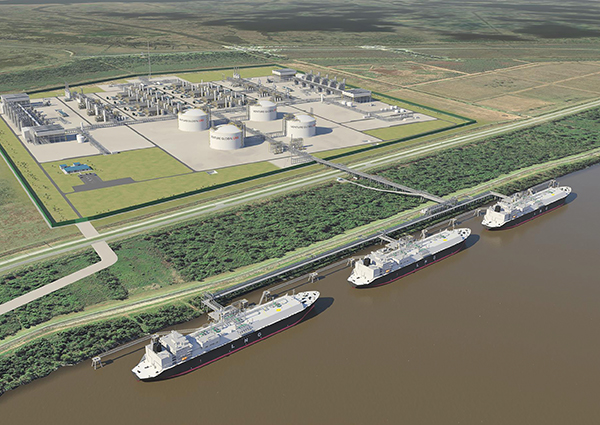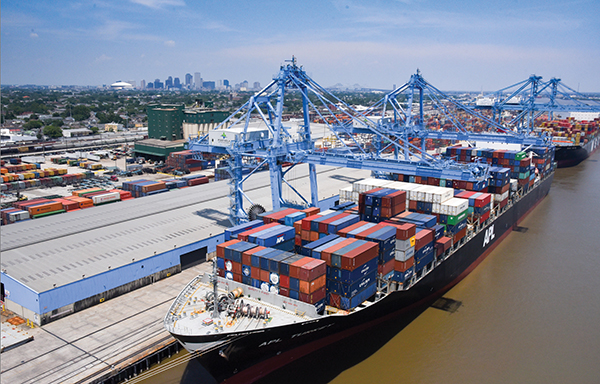
Two major global economic trends ñ a transition to cleaner energy and an emphasis on supply chain logistics ñ have created enormous challenges for some states, but historic opportunities for Louisiana.
Taking advantage of a growing workforce, oil and gas industries have expanded into the Bayou State. Louisiana has seen a major economic boost in this industry that is attracting thousands of new jobs and billions of dollars in investments.
Meanwhile, the state has invested in finding and using renewable energy resources and attracted investments from companies around the globe, emerging as a leader in renewable energy through continued investment and innovation.
Thriving agribusiness and manufacturing industries underscore the state’s role as a key producer and major exporter of not only renewable energy, but manufacturing products, raw materials, technology, seafood and agriculture. A prime location near the Gulf of Mexico and leading intermodal infrastructure offer a gateway to the world.
All this, together with a competitive incentives program, skilled workforce, business-friendly tax environment and unique quality of life, creates incredible momentum.
Louisiana’s Multifaceted Approach to Energy

Photo provided by Venture Global
The energy business is complex, but Louisiana’s strategy for the sector can be summed up in four words: all of the above. Since 2020, Louisiana Economic Development has attracted over 20 energy transition projects worth nearly $40 billion in new investments to the state. These projects significantly support Louisiana’s economy, creating over 20,000 new jobs.
Projects cover a diverse range of investments, including hydrogen, offshore wind, carbon capture, EV battery material processing and bioenergy. Meanwhile, the state continues to support vital oil and gas interests, including its critical role in the global LNG supply chain.
While newer power generation technologies advance toward commercial scale, natural gas remains the leading source for global hydrogen production, which is set to quadruple by 2030. Louisiana is not only well prepared for that surge, but it is also putting the pieces in place to decarbonize the production process, employing both carbon capture technology and renewable energy sources for production.
One such program exemplifies the state’s ambitions. H2theFuture is a multifaceted, groundbreaking plan to create an offshore, wind-powered hydrogen energy industry cluster in south Louisiana. The funding comes from a $50 million U.S. Economic Development Administration’s Build Back Better Challenge grant and $24.5 million in matching state money.
The use of offshore wind power to produce hydrogen comes as substantial investment, research and innovation are already well underway in that sector. The state is a natural fit, and its skilled energy and offshore workforce add another unique advantage.
LM Wind is a global blade manufacturer whose facility in New Orleans East is the only wind engineering technology center in the country. In addition, Gulf Wind Technology bills itself as the leading turbine rotor technology specialist in the country. The company is based at the former Avondale Shipyard, a railroad-connected property that spans 254 acres along the New Orleans Mississippi River waterfront.
The federal government also recently selected the first two areas for offshore wind development in the Gulf of Mexico, and a 174,000-acre area south of Lake Charles was chosen as one of the two sites.
The state’s higher education institutions support these developments. The University of New Orleans, in partnership with the UNO Research & Technology Foundation, launched the Louisiana Wind Energy Hub at UNO. Located at The Beach at UNO, the university’s research and technology park, the hub will offer offshore wind energy coursework to engineering students.
With an influx of investment and a skilled workforce, Louisiana is moving toward what could be one of the state’s largest economic boosts, and companies are taking notice. As Cleco President and CEO Bill Fontenot said, “In Louisiana, we have the natural resources, the ingenuity, the geology, the people and the infrastructure to transform the power industry as we know it.”
Ports and Infrastructure Make Louisiana a Global Trade Leader

that will dramatically increase the state’s import and export capacity.
Photo provided by Port NOLA Commerce Authority
Business success often relies on infrastructure and logistics, and Louisiana’s extensive port system, proximity to the Gulf of Mexico and central location in the southern U.S. establish it as a powerful hub for global and domestic commerce.
Evolving and adapting is part of Louisiana’s logistics legacy, as evidenced by several features. Six Mississippi River deep draft ports combine to handle the most domestic cargo in the nation. There are six Class I railroads, spanning over 3,000 miles, and New Orleans is the only place in America where six Class I railroads converge with a deepwater seaport. More than 1,000 miles of interstate connect all corners of the state with major regional markets such as Atlanta, Dallas and Houston. There are nearly 50,000 miles of pipelines, integrated to crisscross every major highway, railroad and navigable waterway in the state. Finally, the Louisiana Offshore Oil Port is the nation’s first and only deepwater oil port.
The Port of New Orleans added to that legacy in December 2022 when it announced a public-private partnership to develop and operate the $1.8 billion Louisiana International Terminal (LIT) container facility. That expansion will dramatically increase Louisiana’s import and export capacity: At full build-out, LIT is expected to handle two million TEUs annually, taking advantage of the deeper 50-foot Lower Mississippi River Ship Channel and strengthening Louisiana’s ability to attract distribution centers, logistics services and value-added services through Port NOLA’s multimodal connectivity.
These types of long-term infrastructure investments allow Louisiana’s ports to maintain their critical role in global supply chains, accounting for 25 percent of all U.S. waterborne commerce. They also help to explain why Louisiana is home to five of the top 15 U.S. ports by tonnage and the largest liquefied natural gas (LNG) export terminal in the country.
The expansion has been accompanied by innovation. In 2021, a forward-thinking partnership between the U.S. Department of Commerce, the State of Louisiana and the nonprofit Water Institute of the Gulf developed the Lower Mississippi River SmartPort & Resilience Center, or SmartPort, to bring river navigation into the digital age.
Offering real-time data that can be shared by port administrators, shippers, tenants, cargo and ground transportation providers, SmartPort has been compared to the Waze motorist app, giving information that boosts efficiency by allowing users to assess critical operational factors such as tracking currents, river congestion, visibility and weather conditions. SmartPort’s unique data-sharing solution enables the full spectrum of stakeholders — from captains to cargo companies and port operators — to pinpoint potential delays in operations and, in the process, significantly improve their logistical capabilities.
The logistical advantages of doing business in Louisiana have placed it at the epicenter of world trade for centuries. Today, major public and private investments are ensuring that the state’s international commerce leadership role will be secure for generations to come.
Historic Milestones
The results speak for themselves. Capital investment in Louisiana is skyrocketing. It has increased annually every year since 2017 and exceeded $20 billion in announced projects three years in a row for the first time in state history. By the end of this year, LED’s eight-year scorecard will show nearly 300 major economic development project wins representing more than $100 billion of new capital investment.
Louisiana economic development projects announced since 2016 will result in the creation of an estimated 80,000+ direct and indirect new jobs. Louisiana’s manufacturing jobs – the “gold standard” indicator of economic health, due to their positive ripple effect on the economy at large – ended 2023 at their highest level in eight years. Steadily increasing private investment and job creation are foundational factors contributing to the lowest unemployment rate in state history in 2023.
That kind of economic development success would be impossible without foundational strength. The Louisiana legislature has authorized significant investments to bolster the state’s infrastructure, strengthen public and higher education, improve the tax climate, reduce and restructure state debt, and increase savings and stability with a healthy budget surplus.
Accompanying this increasing investment is the increasing diversification of industry sectors that are poised for rapid growth. Traditional workhorses of the Louisiana economy – energy, manufacturing and agribusiness – are still going strong. But they also are transforming through technology and sustainability.
Meanwhile, Louisiana is nurturing sectors that are destined to be pillars of its economy for years to come, from aerospace and aviation to technology and life sciences. Industry leaders have helped to steer bioscience from niche status to a significant growth industry for Louisiana, with the support of legislation that has established some of the best business innovation and research funding programs in the country.
Louisiana is supporting a robust information technology and cybersecurity sector, setting up the growth of CGI, IBM, GDIT and other important companies in the alphabet soup of this leading-edge industry.
All of which is to say: Louisiana has brought stability and consistency to the business of economic development, making investments to improve the economic condition for the long haul through sector diversity, to set Louisiana on a sound financial footing going forward. T&ID

